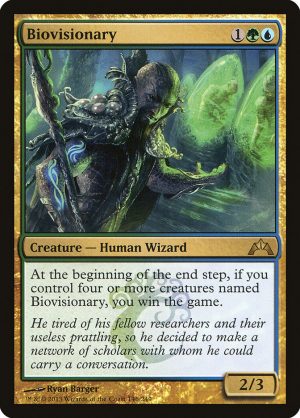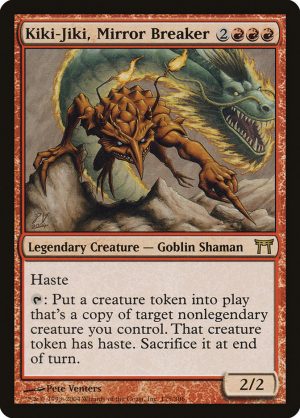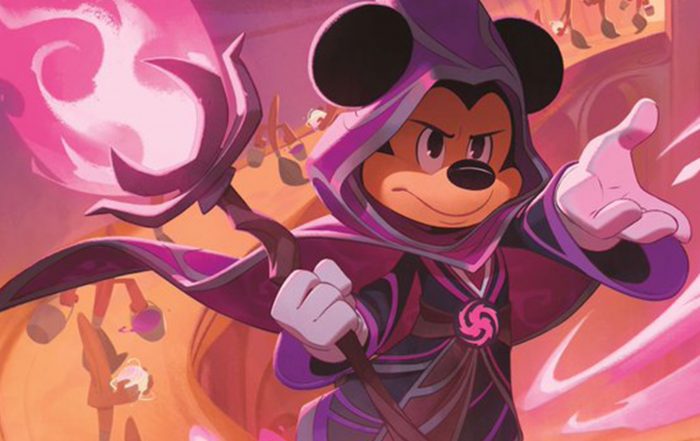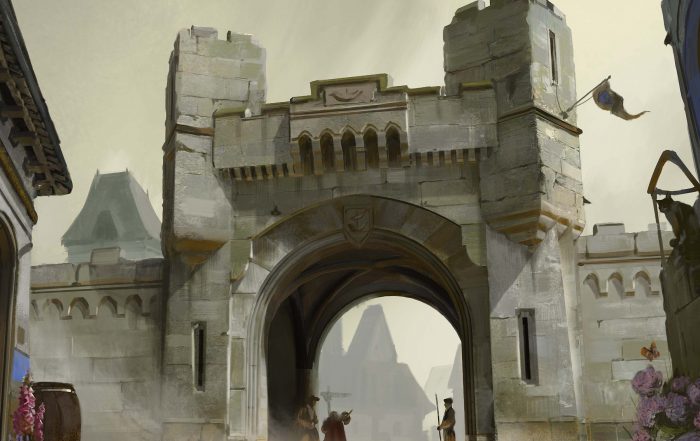The Best Underrated & Most Overrated Commanders
Commanders – Overrated and Underrated in 2022
Which Commanders are overrated and which should see more play
Author: David Merker-Schwendinger
Often, when you get together with friends or with strangers in various game rooms to play Magic, specifically Commander, you often come across the same legendary creatures that are used as leaders in this system. Urza, Lord High Artificer, Edgar Markov, Jace, Vryn’s Prodigy or Krenko, Mob Boss can be mentioned as examples.
In this article, I want to introduce you to two overrated and two underrated Commanders who, in my opinion, are used far too frequently, or unfortunately too rarely.
Why is nobody playing these Commanders?
A samurai should always be prepared for death – whether his own or someone else’s
Toshiro Umezawa offers a good destructive power for 1BB. With a mono-black deck, you can tend to different strategies (e.g., sacrifice, creature destruction or lifedrain) depending on your own preference. If an opponent’s creature dies, a spontaneous spell from your own graveyard can be played.

In my experience, in multiplayer games, the decks that are attacked first and kept down are the ones that have already won a victory or two, so they are the ones that are seen as a threat. Often you only need to take a look at the opponent’s command zone to know what to expect and whom to attack first. Toshiro himself doesn’t appear there often, and thus offers a pleasant advantage.


The low mana cost allows him to be brought into play quickly and recast as soon as he moves back into the command zone. In terms of strategy, it can be played both flexibly and linearly, although the two buzzwords indestructible and hexproof can present mono-black with a challenge every now and then if you rely on regular destruction spells. Exile spells like Vraska’s Contempt, Baleful Mastery, Oblivion Strike or Silence the Believers should definitely be in the deck.

Enchantments like Lethal Vapors or Black Market quickly take the air out of some opponents’ sails, whereas you get a boost of some rounds.
Many cheap Instants in the deck can unleash their destructive power thanks to Toshiro from the graveyard once more. The cards exiled in this way can be reactivated with Mirror of Fate, for example, and resolved in a win combo.
If you combine the whole thing with Tormod’s Crypt, Bojuka Bog, Mimic Vat or the Nightmare Shepherd, your own creatures also end up in exile.
The nice thing about it is that every player can experiment at his own will to find a strategy that is pleasant to play for the respective person and can also react flexibly to different opponents.
Let’s talk about tokens, baby. Let’s talk about you and Myr.
Myr had often only served as an additional manabase in my decks, but with Brudiclad, Telchor Engineer a new utility of the mechanical artifact creatures created by Memnarch came up. For 4UR, he’s not a commander of the cheap variety, but the passive ability gives us a good base for various combos.
At the beginning of each combat phase, we get a 2/1 Myr artifact token, after which another token controlled by ourselves may be selected, from which all other tokens become copies. If you think for example of Dark Depths, which generates us a 20/20 black flying and indestructible token, the potential is obvious.
Whether you want to attack or use the tokens to mill with Altar of Dementia, for example, is up to the player. Sacrifice can be combined with Dross Scorpion to use other artifacts a second time. Or you can use Coat of Arms for reinforcement.
Another advantage, from my subjective point of view, is that the effect has no end, so the tokens can remain copies forever. If you are looking for the destruction that red offers us, you can generate mana with Ashnod’s Altar and Crackle with Power, which unfold in a wave of destruction.

Since Strixhaven with the Prismari School, the blue-red color combination has taken on even greater potential for me than was previously available through the Izzet Guild. If you use Galazeth Prismari, every Myr token, since it is an artifact, is a mana generator.
If one wants to lean a bit more towards a Myr artifact tribal deck, the Genesis Chamber, Myr Turbine, Myr Battlesphere and Mirrorworks cannot be missed to create additional tokens.
A big problem will probably be that the opponent(s) will strive to keep Brudiclad off the board. Here, the Clone Legion is a good way to copy your own tokens and use the Mechanized Production to win the game in your own combat phase if you play Brudiclad in the first main phase.
If you’re leaning more towards red, the Siege-Gang Commander or the Kiki-Jiki & Conspicuous Snoop combo are useful for generating tokens and dealing damage.
The most “Basic” Commanders
Some decks that have their Commander solely for coloring in the Commandzone also exist, with the legendary creature never being played. These creature cards can also be considered overrated, but since no legendary creature can be immune to such a fate, the field here is too broad to use examples.
On the other hand, many cards from older editions are not really relevant, even though they are legendary, because they do not have good synergy abilities in their repertoire.
At this point, however, I would like to talk about two creatures that I have come across time and again as an opponent’s commander, which I feel are absolutely overused and sometimes A-rated. What bothers me about such creatures is that the decks are always played the same way, the strategy and the cards included are often taken over 1 to 1 from EDHREC.com.
This one will not be mizzet
Niv-Mizzet, Parun is a (relatively) young card that I often stumble across when it is used in spellslinger decks. I have it myself as a “non-commander card” in a Locust God deck, as its synergy to draw cards is pretty awesome. The blue-red colour combination is very popular, and may do massive damage. The problem I see with Niv-Mizzet, Parun is that it is always played with the same strategy and a relatively static decklist.

The mana cost RRRUUU plays into the higher end, while Dragon Wizard cannot be countered, he is not immune to destruction spells. So, he can quickly increase immeasurably in the later game if the opponent(s) decide he is a major threat.
If you play in a multiplayer game, you are guaranteed a good damage output per player turn, so that either the board or the life points of another player are severely diminished.
Some players I have talked to use it because it is seen as a “high power” card.
In the Commander format, I see its weakness mainly in that it can best shine against mono-blue decks that have little creature destruction and because of its no-counter ability. Decks that push aggro, such as red, white or black cards, will send him back to the command zone time and time again.
Did you ever wonder if the person in the puddle is real, and you’re just a reflection of him?

Riku of Two Reflections is a card I would never play as a commander, but one I have encountered time and time again. For 2GRU it offers a solid color combination, but the actual passive effects are mediocre in my eyes.
The bottom line is that every spell in your deck, whether instant, sorcery or creature, becomes two mana more costly, which you can have with other cards as well. If the mana base is not there, the Commander is largely useless.
Not only is the cost of the card high, but it is also color heavy, requiring early ramps. Since many of these cards are green, the manabase should be geared accordingly so that they are more likely to be cast from the starting hand. The only color that can draw on a variety of board wipes through Riku is red. Both black and white are denied.
Besides, the weak stats, 2/2, catch the eye of the beholder. This makes it very easy to remove him from the board, which pushes its already high cost even higher. A possible wincombo can be achieved with Biovisionary and other copy spells contained in blue and green. Otherwise, you have to push aggro with haste and big creatures, which you can copy with one of your Commanders’ abilities.
About the Author
David Merker-Schwendinger started playing Magic: The Gathering as a teenager. His first Deck was a Mirrodin Preconstructed Deck.
Over the years, he developed an interest in role-playing games, which was sparked during his Archeological studies at university.
The Magic card collection kept growing during his Master studies of Austrian history. Some topics he studied, like heraldic, came in handy for his role-playing storytelling.
He is the host of a YouTube channel (NerdNavigator) where he features the Austrian D&D community and Dungeons’ and Dragons in general.
Booster Drafting with friends and exploring Ravnica with his Dungeon and Dragons party are among his favorite things to do in his free time.

All Articles by David Merker-Schwendinger
How To Play Disney Lorcana
Here's everything you need to know about the gameplay of the new card game Disney Lorcana. In our latest article, David explains to you everything you need to know about Ink, Glimmer, turn structure, card types and anything else surrounding the gameplay of Lorcana.
Commander Legends 2 – Battle for Baldur’s Gate
Commander Legends 2: Battle for Baldur's Gate released a few weeks ago. Our author David takes a closer look at the set and tells us about what Beasts, Dragons and other mythical creatures he is really excited about!
Streets of New Capenna: The Most Powerful Commanders
Streets of New Capenna is out right now and with it come a few really strong Commanders! In this blog entry, we are going to present you the most powerful Commanders from Streets of New Commander. Maybe you get to play some of them before they eventually get banned?
The Best Underrated & Most Overrated Commanders
In today’s article, David is taking a closer look at the Commander table and filters through different choices for the top leaders of current decks. If you’re interested in getting to know his picks for the best underrated and the most overrated Commanders in Magic: The Gathering, keep on reading right here.
The Best 5 Commanders in 2022
David is presenting his top 5 list of Commanders he thinks who are the strongest choices, he is not yet playing in Commander. From funky picks to powerful format mainstays. There's a legend for everyone.
Commander Deck Tech: Goblins
Squee and his minions are David's favorite Commander deck at the moment. Read what makes the deck work and what combos you can pull off with it.
Ninjas in Legacy
Tribal decks in Magic the Gathering are fun. What is more fun than the Ninja tribe? Not much. Sneak your way to victory in Legacy with this version of Ninjas, including tips, tricks and a sideboard guide by the Master Ninja, Zen Takahashi
Review Innistrad: Midnight Hunt Commander Deck – Part 2
Magic the Gathering's latest release, Innistrad: Midnight Hunt, comes with a new Commander Deck as well. The main theme of Coven Counters Unleashed is, different powers among your creatures to trigger the new Coven keyword. David is giving the deck a test drive and shares what he thinks about it.
Review Innistrad: Midnight Hunt Commander Deck – Part 1
Magic the Gathering's latest release, Innistrad: Midnight Hunt, comes with a new Commander Deck as well. The main theme of Undead Unleashed is, you probably have guessed it already: ZOMBIES! David is giving the deck a test drive and shares what he thinks about the deck.
Review D&D Commander Decks – Part 2
David is back to try and test the remaining two AFR Commander Decks. Find out if this is a good investment for avid Magic the Gathering Commander players or if you should put your money elsewhere.
Review D&D Commander Decks – Part 1
David is back, and he not only checked out one or two of the four Commander Decks from Adventures in the Forgotten Realms. No, he tried all FOUR of them. Today, in Part 1 he starts with the first two and next week the other two will follow.
Magic goes Dungeons & Dragons
David will show you around Magic's first crossover set that ventures in the world of Dungeons and Dragons. He will explain the set that's called Adventures of the Forgotten Realms from a role-players view

















